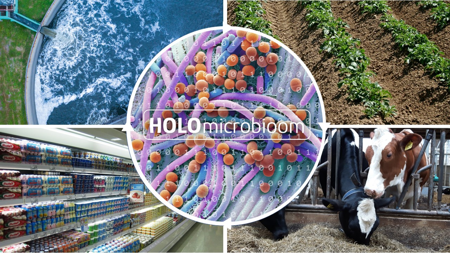 Amsterdam, March 15, 2024 – The government of the Netherlands has allocated €200 million from the country’s National Growth Fund for a public-private consortium that will conduct research into 'microbiomes' and economically interesting applications thereof. The funds, which will add to €150 million that the dozens of consortium members and partners themselves contribute, will support the activities of a national 'Holomicrobiome Institute' over the next ten years.
Amsterdam, March 15, 2024 – The government of the Netherlands has allocated €200 million from the country’s National Growth Fund for a public-private consortium that will conduct research into 'microbiomes' and economically interesting applications thereof. The funds, which will add to €150 million that the dozens of consortium members and partners themselves contribute, will support the activities of a national 'Holomicrobiome Institute' over the next ten years.
In the consortium, ten Dutch universities, five university-medical centers, four universities of applied sciences, and many other knowledge organizations work together with dozens of small and large companies (including MIMETAS) and societal organizations.
MIMETAS (Leiden, The Netherlands), the renowned leader in human tissue and disease modeling using organ-on-a-chip technology, proudly announces its partnership in the Holomicrobiome consortium. Leveraging their human tissue and disease modelling expertise and technology, MIMETAS will develop a "gut-on-a-chip" platform. This innovative tool is designed to simulate the human gut's environment, enabling the consortium to explore new strategies for preventing and curing chronic diseases by closely studying the interactions within microbiomes. MIMETAS' contribution will be crucial in pushing the boundaries of microbiome research, offering promising new avenues for health improvement and disease management.
International leading position
Thanks to the new Institute, the Netherlands will be able to strengthen its international leading position in the field of 'microbiomes' -- communities of micro-organisms such as bacteria, fungi and viruses that are essential for the health of people, animals, plants and the environment. The knowledge will yield many applications, which will contribute to long-term earning capacity of the Dutch economy and to health, sustainability and circularity in the Netherlands as well.
The cabinet allocated the funds based on the advice of the independent National Growth Fund Advisory Committee. In its advice, the committee notes the economic and social potential of the microbiome research field, the strong scientific starting position of the Netherlands and the innovative cross-domain approach and involvement of the business community.
The funds intended for the second half of the plan period (€140 million) were allocated subject to positive indicators on various criteria near the end of the first half.
Transcending domains, sectors
The Holomicrobiome Initiative is unique worldwide because it brings together and integrates microbiome research from all scientific domains and business sectors within one Institute. At present, microbiome research is spread across separate medical, veterinary, agricultural and water-oriented domains.
Due to this compartmentalization, a lot of knowledge is lost, and uncertainty remains about how complex microbiomes influence each other across various sectors. Micro-organisms, after all, migrate between soils, crops, food products, water environments, (farm) animals and people. A joint, integrated approach will ensure innovative applications of micro-organisms, while providing clarity about their safe implementation.
Innovative microbiological applications
New microbiological applications can range from more environmentally friendly crop cultivation methods to improved animal feed, from healthier nutrition to reduced antibiotic use, from measures against water pollution to limiting emissions of greenhouse gases and nutrients (such as nitrogen) to the environment. Some of these microbiological applications may replace traditional chemical-based approaches.
'The Holomicrobiome Institute will look at microbiomes in a complete food system for the first time. It connects knowledge about compartments that have until now been researched separately, and scientific worlds that still operate separately,' says Prof. Dr. Marten Smidt, professor at the University of Amsterdam and coordinator of the initiative. ‘This will help companies to innovate and governments to design rules that enable the application of such innovations.’
More information, visit Holomicrobiome Initiative
